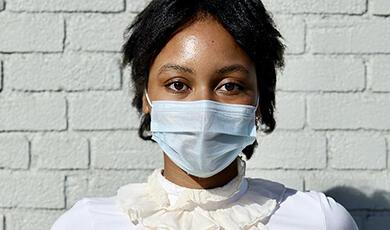Food-and-Drink Borne Diseases
Share
- Details
- Text
- Audio
- Downloads
- Extra Reading
Many major diseases are transmitted by food or drink. Cholera (water), brucellosis (milk), BSE/nvCJD, typhoid and many parasites are ingested as part of a normal diet. The more exotic the diet, the greater the range of possible infections. Water technology, sanitation, pasteurisation and animal husbandry can substantially reduce but not eliminate these diseases.
Download Text
The second lecture in this series about routes of transmission of infection will consider the oral route of transmission; food, water and other drinks. The reason that route of transmission is essential to understand infections is because countermeasures depend on this. There are broadly five principal routes of transmission of which oral is one, and most infections have a dominant route and sometimes a secondary route. These notes are to give the structure of the lecture and are not a transcript.
The oral route is potentially a very good one for infection to enter the body. Multiple viruses, bacteria and parasites have evolved to use it. Water and food are essential. It does not require the person or animal doing the infecting to meet the infected person – for example they could be many miles downstream. Infected individuals are often infectious for prolonged periods.
There are several common patterns of infection by the oral route. Infections can be waterborne. They can be faeco-oral between humans on food. They can be through milk and milk products and eggs. They can also be from animals via a variety of routes. In some humans are a central host, in others they are an accidental host for the infection or parasite.
If you know transmission is by the oral route, there are some clear and practical countermeasures that can be taken. If they are from humans: hygiene, hand washing, sanitation and cooking are usually effective. If animals or poultry, animal husbandry, hand washing and cooking meat and sometimes freezing are usually effective. If from fish cooking, occasionally freezing will have a big impact.
For the oral route of infection engineers, farmers, food handlers and cooks are therefore more important than doctors. Engineers provide clean water technology, sewers and cooking and freezing technology. Food producers and farmers provide hygienic animal husbandry, identify and isolate disease animals and maintain a hygienic cooled food chain. Cooking is one of the best ways to minimise the risk of many orally transmitted infections.
Human to Human Infections by the Oral Route
The first main route to consider for oral transmission is water. An old but still useful concept is the idea of waterborne diseases versus water washed ones. Waterborne is in the water you drink. These include diarrhoeal diseases including cholera, typhoid and others. Water washed is lack of water leading to reduced hygiene and sanitation. Many infections are both.
Cholera is the archetypal epidemic waterborne disease. There have been several major pandemics with very high mortality; in the 1854 London epidemic mortality rates were up to 12%. This epidemic also saw the first significant epidemiology by John Snow which demonstrated both the transmission route and how to prevent it.
The key to combating waterborne diseases is engineering. The central need is to separate human faeces from drinking water. This relies on provision of sufficient sewerage and sewage treatment, better sourcing of water from uncontaminated sources and water treatment for remaining pathogens. Waterborne infections are now rare in high income settings. Waterborne diseases are in retreat but remain a major threat in areas of poverty. It is possible to make contaminated water safe to drink by some combination of boiling, filtering and chemicals but at a cost. When infrastructure breaks down due to war or disaster cholera and other diarrhoeal diseases follow.
Vegetables, often consumed uncooked, can harbour human or animal faecal contamination leading to infection. Vegetables in some settings are fertilised with human night soil and animal manure is also a common fertiliser in low-income settings. If people have not washed their hands between defecation and preparing food high levels of faecal contamination are possible. Examples where human faeces on or in food can lead to human infection include typhoid, bacterial and viral diarrhoeal diseases of children which cause substantial mortality to this day, travellers’ diarrhoea, polio and several parasites.
For some of the major diseases we now have vaccines where hand washing is not enough. These include rotavirus which is extremely transmissible and causes diarrhoea in children, and recent demonstration of an effective typhoid vaccine. Diarrhoeal diseases, almost entirely transmitted by the oral route, are a major cause of mortality particularly in children. They cause over 8% of global deaths in under five years although this proportion is steadily dropping as clean drinking water and sanitation become more widespread.
Several other infections can be important by the oral route. Some infections have evolved ingenious ways of getting around normal sanitation such as pinworm in children. Some infections can cause significant gut problems by the oral route via toxins rather than infection in particular in people who have not washed their hands. Some infections of humans via the oral route are in the liver rather than the gut including hepatitis A and E.
Animal to Human Infections by the Oral Route
Milk is both essential to fight infections, particularly for babies fed breastmilk, and from animals it is also one of the most effective mediums for transmitting many other infections. Some of these infections are relatively specific to milk including brucellosis and bovine tuberculosis. Brucellosis, a chronic debilitating fever, is mainly spread by milk from cows, sheep or goats. It has been largely eliminated from cow herds in high income settings. It remains a risk in particular where goats and sheep are commonly used for their milk products.
Tuberculosis from cattle used to be a very major risk for people, particular children, when drinking milk. Eliminating TB from cattle is more difficult than brucellosis and remains common, including in the UK.
Fortunately, pasteurisation of milk is highly effective in preventing TB, brucellosis and many other infections as well as extending the shelf life of milk. Despite the fact that thousands of children and adults died of infections passed on by milk in particular bovine TB, there was a very strong lobby against compulsory pasteurisation, and it took some years before it was introduced. Now significant infections passed on by milk are extremely rare in countries where there is reasonable animal husbandry and pasteurisation. Some milk products are difficult to produce unpasteurised including some cheeses. These should be avoided by pregnant women due to significantly increased risk of infection and risk to the foetus.
Breastmilk for babies is highly protected against infection. It is a safe and ideal form of nutrition, protects against diarrhoeal disease and passes antibodies from the mother to the baby. Breastfeeding the baby in the first six months is recommended by WHO. There are small risks of infections such as HIV with uncontrolled disease, but these are far outweighed by the benefits.
Eggs are highly nutritious but from infected flocks can have Salmonella from hens. This risk can be mitigated by cooking until they are hard. Since many dishes depend on eggs not being that heavily cooked this created a crisis for the UK poultry industry in the mid-1990s when there was widespread flock infection. Initially this required mass slaughter of hens, but poultry vaccination has contributed to the UK poultry industry recovery. Lion Mark eggs are highly controlled, and the risk is now very low in the UK, but not worldwide.
Animals and poultry have gut bacteria which can infect humans. They may get onto meat and poultry in the slaughtering and processing process. They may also contaminate vegetables on farms or in preparation. Important infections include Salmonella and Campylobacter which cause ‘food poisoning’. Fully cooked meat is low risk, but it is very easy to cross contaminate from uncooked to cooked meat when preparing meals. Summer barbecues are a classic way to achieve cross contamination.
Refrigeration and freezing substantially expanded the options for fresh food, keeping both cooked and uncooked food safe for longer.
Some parasites have a complex life cycle which involves humans as a necessary part. Three types of tapeworms are important in different parts of the world depending on local diet. Beef tapeworm cycles between cows and humans. Pork tapeworm does the same between humans and pigs and it is more dangerous as cysts can develop in the brain and cause epilepsy. Fish tapeworm is caught by eating undercooked fish which has been infected. Another form of flatworm transmitted by the oral route is flukes and specifically human liver flukes that are passed between fish and humans; they can cause cancer if untreated. In all of these cooking can kill parasites.
For several parasites humans are an accidental host. One important one is hydatid tapeworms which pass between sheep and dogs. When humans are infected, this can cause very serious illness with large cysts in the liver, bone or lungs. Several other parasites are common in fish and foodstuffs that are more rarely eaten including snake, boar, bear and giant land snails. In all of this advice should be that if you wish to minimise the risk of catching often quite dangerous parasites cooking all the way through is essential.
The final group of infections to consider are not actually infections in the ordinary sense. Prions are abnormally folded proteins which in particular can cause neurological diseases. They are transmitted orally and occur in several species. They are difficult to sterilise by conventional cooking or disinfection. They were first discovered in humans as kuru and were transmitted by funeral cannibalistic rituals. Most recently in the UK they caused an outbreak of BSE in cattle and subsequently a small but tragic group of people were infected with vCJD.
Engineering out many orally transmitted infectious disease epidemics works. They used to be massive. The provision of sewerage and ample clean water has transformed most of the major oral epidemic infectious diseases. Individual infections remain, and outbreaks occur but they make widespread propagating transmission unlikely. The State and business tend to have a responsibility for providing clean water and sewerage.
Farming and food handling reduce the chance of infections and spread to humans. Professional abattoirs, clean and refrigerated food chains and shops, washing of foods which will not be cooked, and inspection of meat all have a role to play.
The majority of food is still prepared and served at home and for this basic hygiene, cooking thoroughly and refrigeration protect family members.
Although there are many major diseases transmitted by the oral route, the impact of engineering, food chain management and better cooking and refrigeration have transformed the outlook for controlling these widespread and important diseases.
© Professor Whitty 2021
This event was on Wed, 24 Nov 2021
Support Gresham
Gresham College has offered an outstanding education to the public free of charge for over 400 years. Today, Gresham College plays an important role in fostering a love of learning and a greater understanding of ourselves and the world around us. Your donation will help to widen our reach and to broaden our audience, allowing more people to benefit from a high-quality education from some of the brightest minds.


 Login
Login







